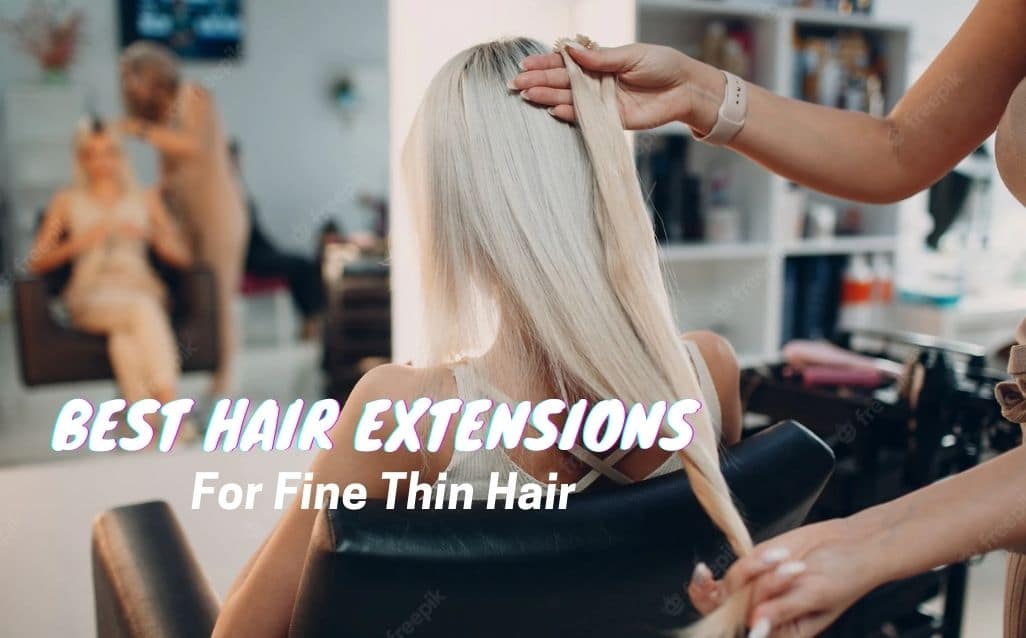Ready to take your clients’ style up a notch with extensions? But first things first: How much are hair extensions in general? How are hair type, extension method, or hair quality related to the cost of hair extensions?
Let’s meet Pietro Santangelo and Alessio Fani, the charismatic faces of New Times Hair. Hailing from the vibrant corners of east Torino, Italy, their salons have ignited global transformations with premium human hair extensions for the past two decades.
Pietro and Alessio also run hair extension classes, catering to keen stylists from all over the globe. So, hold onto your seats; this post will reveal every detail about hair extension costs straight from this powerhouse duo. Get ready for the ultimate insider scoop!
Ever imagined your client flaunting those luxurious, cascading tresses? Caught in the reverie of “What’s the price tag on hair extensions anyway?”
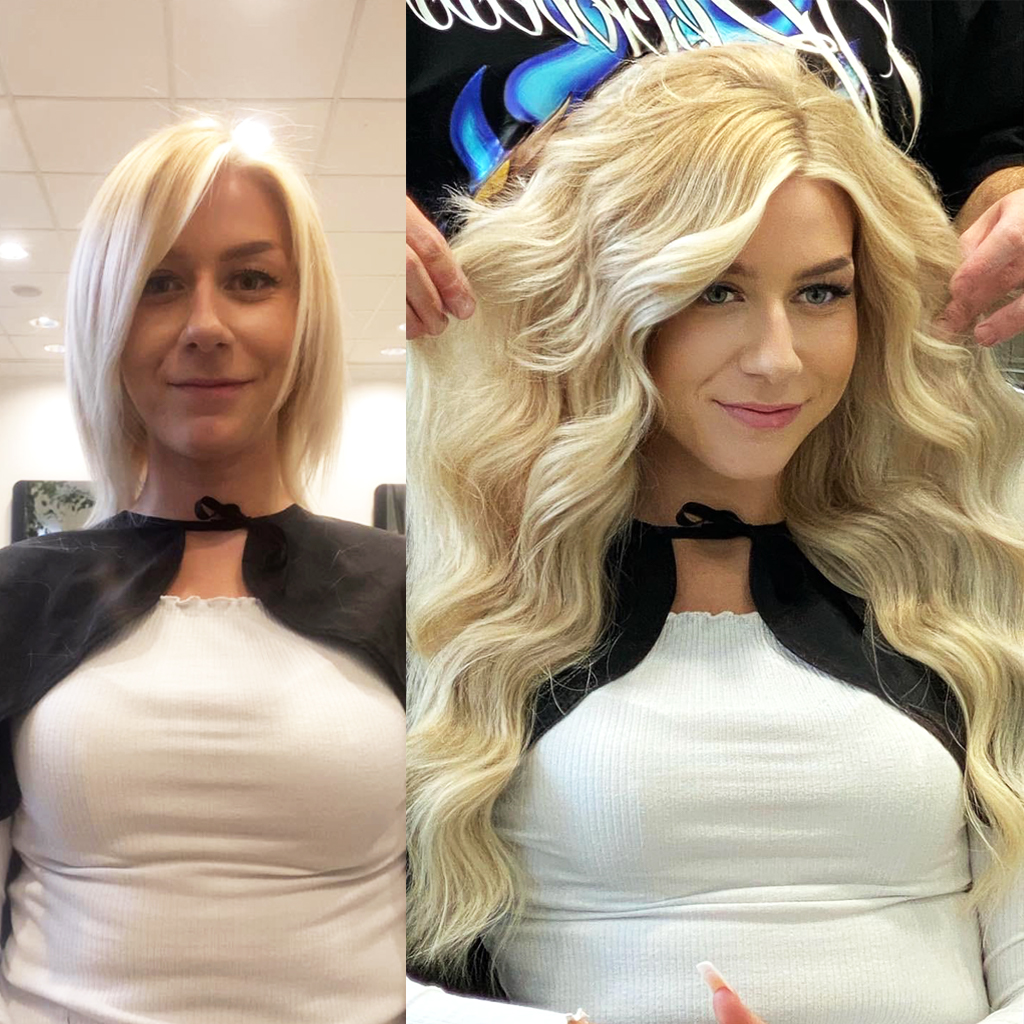
Well, hold onto your hairstyling tools because the answer might surprise you. “The average hair extension cost can come with something other than a VIP price tag,” said Fani during a recent interview. “We’re talking about getting A-list hair without the A-list bill.”
However, you or your client are in control here. Your choice can determine whether you’re on a budget-friendly or more extravagant journey. So consider yourself the conductor of this orchestra!
NOTE: All pricing estimates are in American dollars. To give your brain a currency workout, simply Google “USB to [your currency]” and add up the USD price to unveil the conversion magic.
“How much are hair extensions?” It’s beyond a purchase. It is an odyssey, a symphony with parts like upfront cost, maintenance, bond replacements, and more.
How Much Are Hair Extensions on Average?
While hair extensions range from as little as $30 to a sky-high $3,000, we suggest avoiding those extremes. A $30 hair extension will likely do no good to your looks, while $3,000 is more like a rip-off to most wearers unless you or your client owns a gold mine.
For a sweet spot, good temporary options like halos or clip-ins fall in the $200–$500 range. Now, the tab dances between $600 and $3,000 for the pro-level permanents. It is a pricy ride, alright. But, the average hair extension cost dances to a different tune, shaped by:
- The extension type you’re after
- The hair quality you choose
- The hair volume you desire
- How much are hair extensions at a salon?
- And the application method
How Does Hair Type Contribute to Hair Extension Costs?
Santangelo has ventured across continents, shaking hands with hair vendors far and wide. His treasure trove of extension escapades is so dazzling that he’s our go-to for the juiciest pricing intel.
Imagine the extension game as a face-off between two contenders: human hair and synthetic hair. It’s a showdown where human hair claims the crown. Like a superhero facing their sidekick, human hair fearlessly tackles heavy-duty styling battles, while synthetic hair tends to surrender. Yes, human hair might be a bit pricier, but here’s the scoop: it’s a wise investment that yields fewer replacements and more magnificent locks.
➤How Much Are Hair Extensions in Terms of Hair Type?
Now, let’s talk numbers. Synthetics strut in at $20 to $150, while the VIP section, human hair, steals the spotlight at $100 to $600. Hold onto your hats because, with love and care, those luxurious human locks, especially the double-drawn Remy hair woven into every strand at New Times Hair, will shine for a solid two years.
➤Human Hair Extensions Blend More Naturally With Natural Hair
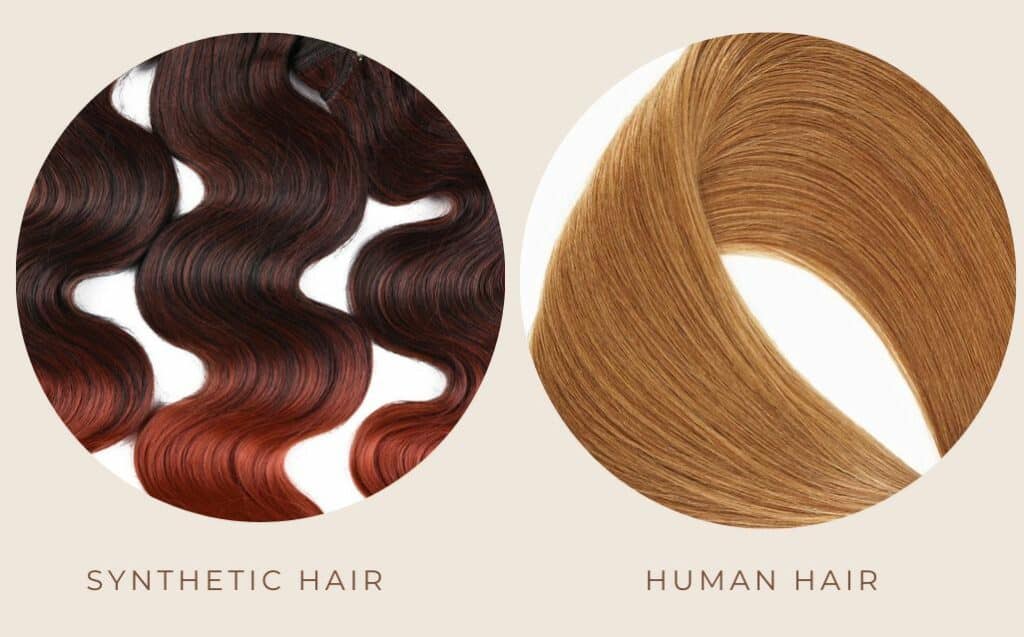
But there’s more to the story. Synthetic hair? It’s got this stubborn glare that’s too tough to banish. Human hair, however, effortlessly melds with the wearer’s natural tresses. It’s like the perfect disguise—no one will ever guess you’re sporting extensions. Every round of the extension showdown is a knockout win for human hair!
How Much Are Hair Extensions Regarding Hair Quality?
Let’s nail this down: hair extension costs ride the wild waves of hair type. No surprises there! Enter the ultimate champ: human hair extensions. They’re not just pretty faces; they’re the golden goose of the hair game. Think of long-term benefits that’ll make your wallet grin.
But wait, the plot thickens hair quality and steps into the limelight when we’re talking human hair. Here’s the starring duo: Remy and non-Remy human hair, ready to steal the scene.
Let’s unravel the hair cuticles first to grasp Remy vs. non-Remy hair. Imagine hair as just tiny cylinders? Nope. Under the microscope, it’s a bustling city of scale-like chips, forming a protective shield that ensures strand strength and harmony.
➤Remy Hair vs. Non-Remy Hair
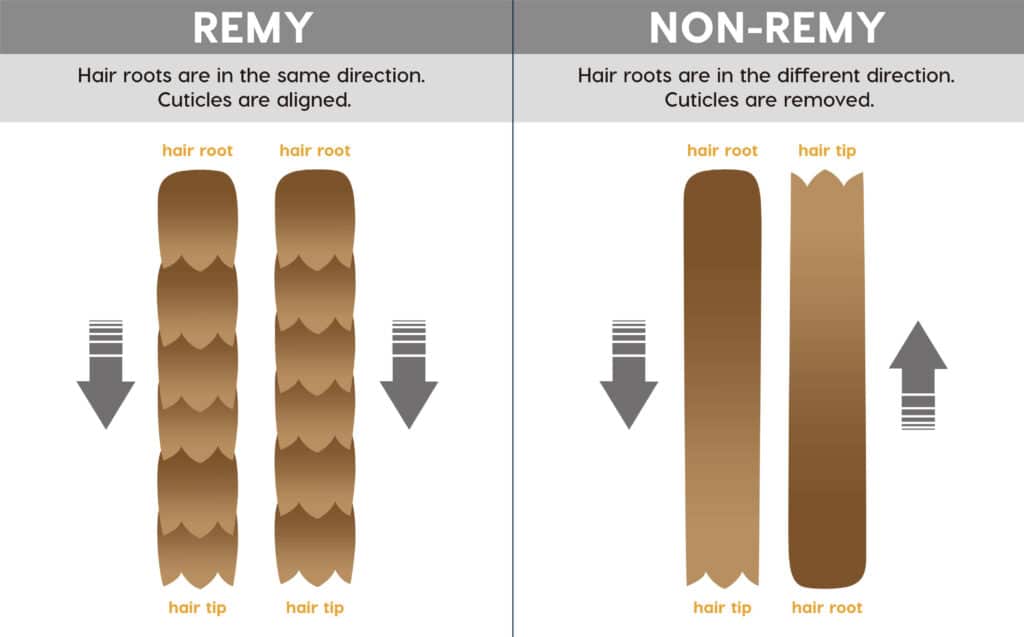
How much are hair extensions considering Remy and non-Remy hair? Indeed Remy hair extensions are a pricier gem sourced from single donors, boasting aligned cuticles that bid farewell to tangles and mats, giving you top-notch quality. Human hair with intact cuticles will last much longer, withstand heavy styling and dyeing options, and retain color permanently. The hair will never tangle or mat with intact cuticles arranged in the same direction. And that’s why Remy hair extensions cost much more than non-Remy hair.
Non-Remy hair is from different donors. That means many strands may not have cuticles arranged in the same direction. This will lead to tangling. So to avoid this, we must strip the cuticles off with acid so the hair no longer tangles. However, extension hair without cuticles is less robust than Remy hair, so that it won’t hold colors. These also contribute to the price difference.
➤Remy and Non-Remy Hair Extensions Price
The price variation hinges on both the hair supplier and the extension method. Typically, comparing the same method with varying hair qualities, Remy hair extensions tend to be twice as expensive as non-Remy options. Consider New Times Hair, for instance: while a set of 18″ non-Remy tape-in hair extensions costs $60, the Remy equivalent doubles the cost, coming in at approximately $120.
How Much Are Hair Extensions Regarding Hair Length?
Most of the time, but not all the time, hair extension costs follow a pretty straightforward principle: Longer and fuller locks equal a heftier price tag. It’s a natural progression: 16-inch hair extensions will cost more than their 10-inch counterparts. But here’s the twist: while thicker hair does amp up the volume, it doesn’t necessarily inflate the cost compared to thinner options.
How much are hair extensions in terms of hair length? Hair extension options usually come in different length options: 14″, 16″, 18″, 20″, 22 “… and up to 30”.
While major hair titans like New Times Hair offer the full range, most other suppliers max out at 24″ or 26″ due to the challenge of finding lusciously long hair compared to shorter strands. As the length leaps every 2″, so does the price by 25%, or $20.
How Much Are Hair Extensions Regarding Thickness?
The hair thickness desired by the client can affect the cost of hair extensions. Thicker hair typically requires more hair extensions to achieve the desired volume and length, so they normally cost more.
Hair extension costs are also determined by weight. The thicker the hair extensions, the greater hair volume, the higher the material cost. Simply put, greater thickness equals a higher price. Thicker hair extensions require more time and expertise to install than thinner ones. The process may involve more complex techniques to ensure the extensions blend seamlessly with the client’s natural hair. This additional labor can increase the overall cost.
How Much Are Hair Extensions at a Salon?
Let’s whirl through salon expenses, mainly linked to permanent hair extensions. Salons may charge differently based on their location and the hairstylists’ experience.
Your total might shimmy and shake based on where your stylist or salon calls home. City slickers, brace yourselves—urban vibes usually mean higher price tags.
How Much Are Hair Extensions Considering Method?
When we talk about hair extension methods or (attaching methods), we mean how the hair extensions get attached to the wearer’s head. Hair extension methods significantly impact the overall cost of hair extensions. Each method has distinct intricacies and requirements that influence the installation difficulty and time, resulting in varying prices. Professional hair extensions require a certified hairstylist, whereas the wearer can install clip-ins and halos at home.
Some of the most common professional hair extensions are:
- Tape-ins
- Microbeads
- Nanorings
- Weave-ins (or sew-ins)
- Fusion and K-tip hair extensions
And here are the most commonly used temporary hair extensions:
- Halos
- Clip-ins
Related: Different Types of Hair Extensions.
It is important to consider these factors when choosing the right method, taking into account both convenience and budget.
➀ How Much Are Tape-In Hair Extensions?
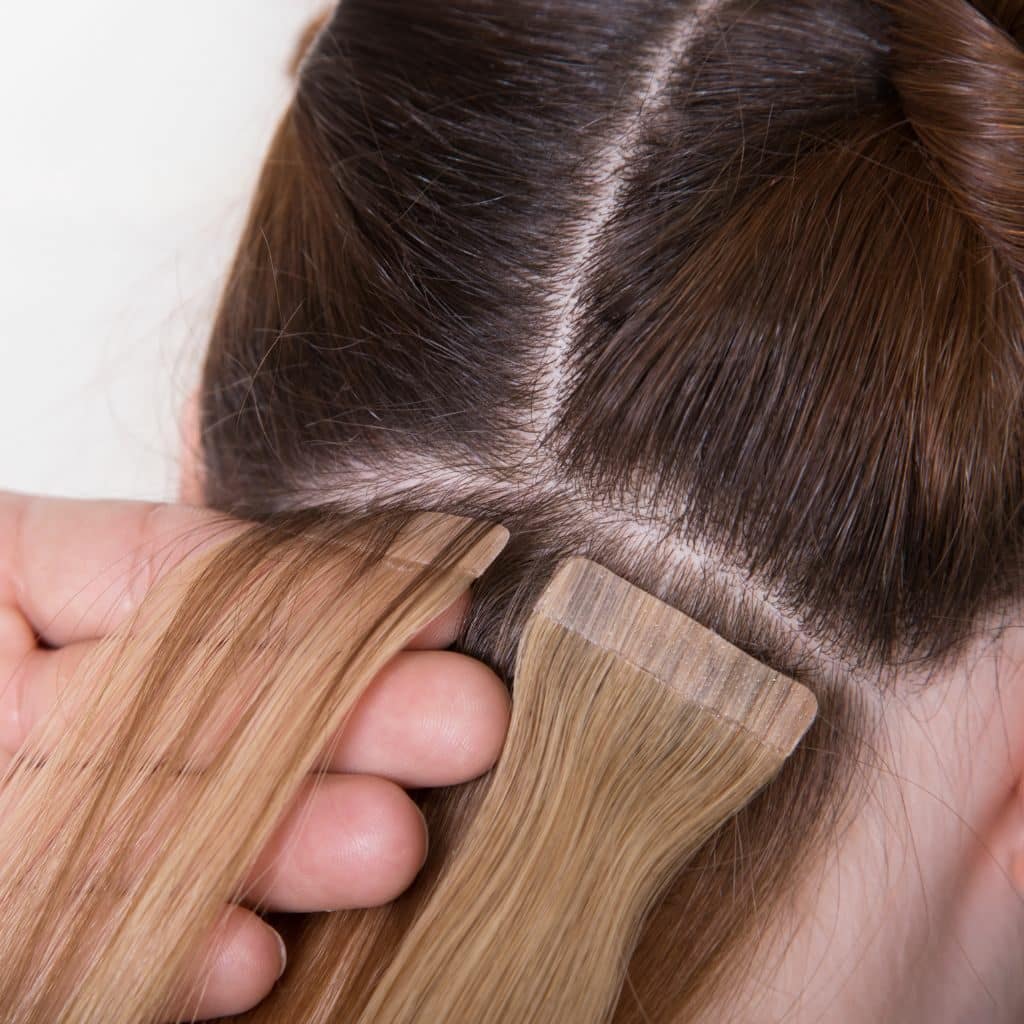
Your client will hold onto her hairpins because we’re diving into tape-in hair extensions—the shortcut to instant glam! Let’s talk numbers that will spin your head.
These tape-in wonders can have the wearer shining like a star, with prices between $200 and $400. The average sweet spot? Around $300, just for the extensions. But there’s more—the hairstylist plays a role too. Installation fees: about $200.
Maintenance time: every 4 to 6 weeks, as your client’s natural hair grows towards the sky, her extensions need a lift towards the roots. She will be in the stylist’s chair, getting that VIP touch-up. The price? Around $120 per session. Magic, well, it costs.
Let’s crunch numbers for a span of 12 months:
- $200–300 for the hair extensions themselves
- $300–350 for installation at a salon
- $900-1,000 for maintenance
- Total: $1,500–1,600
And here’s the twist: this magic show repeats every year with new extensions. So, if you’re ready for the hair adventure, remember that the mirror reflects more than beauty; it echoes every dollar spent for those stunning locks!
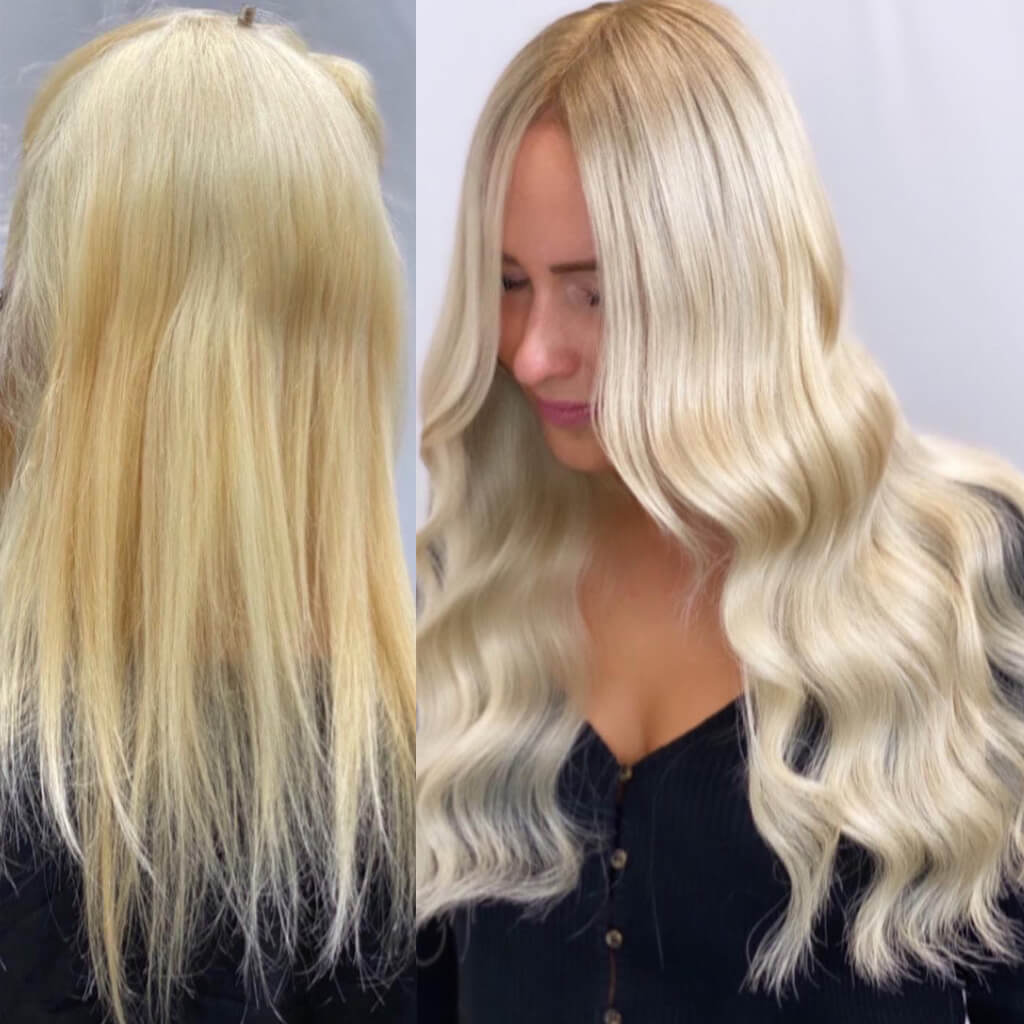
Note: You know what? At New Times Hair, a standard set of tape-in hair extensions with premium Remy human hair starts at as low as $70. Average tape-in hair extensions cost around $120. The max price is $240 (here, I’m talking about 30″ of premium Remy hair in platinum blonde). The hair itself can last up to 2 years with proper care. If you are a wearer, all you must do is replace the tape and keep wearing the same hair.
➁ How Much Are Fusion / K Tip Hair Extensions?
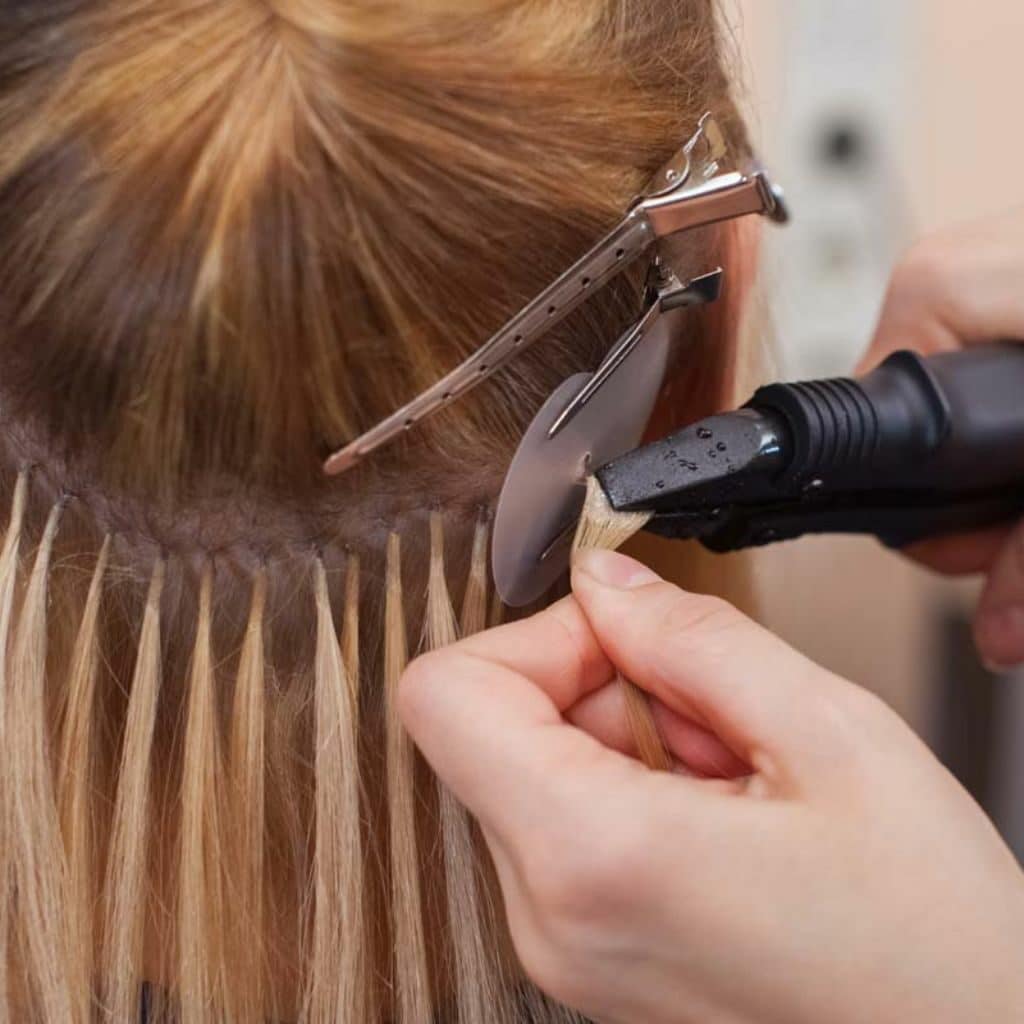
How much are hair extensions? Fusion, hot fusion, and K-tip (short for Keratin tip) hair extensions all mean the same thing. The extension tip is a little keratin blob, the same substance as our natural hair. So when fusion extensions are applied, the bond will be melded into our hair as one. That’s how they give the most realistic look and are loved by most celebrities. The keratin tips are made into different shapes for easy application, such as U-tips, V-tips, etc.
Now, get ready to invest in glam! Prices range from $300 to $1000, averaging $550, plus $200 for the hair. They need a reset every 3 months.
There’s also cod-fusion, lasting longer but averaging $1500 to $3000. Let’s stick to the former.
Fusion’s all about keratin bonds, which are gentler than glue. But weight can lead to hair loss if your client’s hair is sensitive.
Now, the math for the total cost of fusion hair extensions over a year:
- $200-$300 for the hair extensions (if the hair is premium hair)
- $550-600 for installation at the salon
- $500-600 for maintenance and 3-4 times per year = $2,000
- TOTAL: $3,000 per year
And this glamor repeats itself every year. Mirror more than beauty; it’s dollars spent for locks!
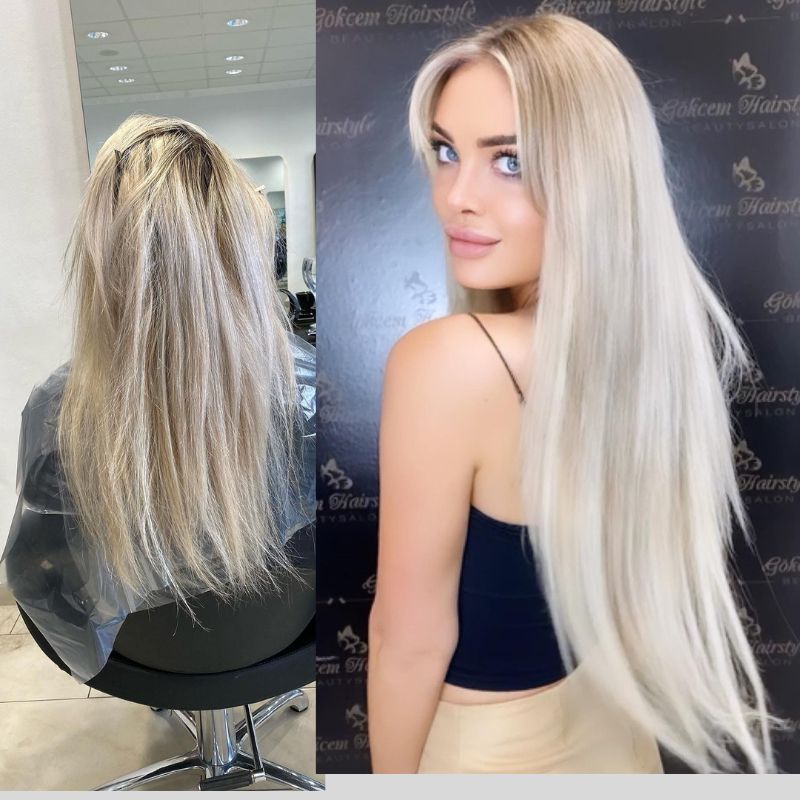
Note: At New Times Hair, a standard set of K tip hair extensions with premium Remy human hair starts at $67. Average K-tip hair extensions cost only around $150. The max price is $240 (here, I’m talking about 30″ of premium Remy hair in platinum blonde). The hair itself can last up to 2 years with proper care. Also, contact stylists for ways to replace the tips, so the hair will last two full years.
➂ How Much Are Weave In Hair Extensions?
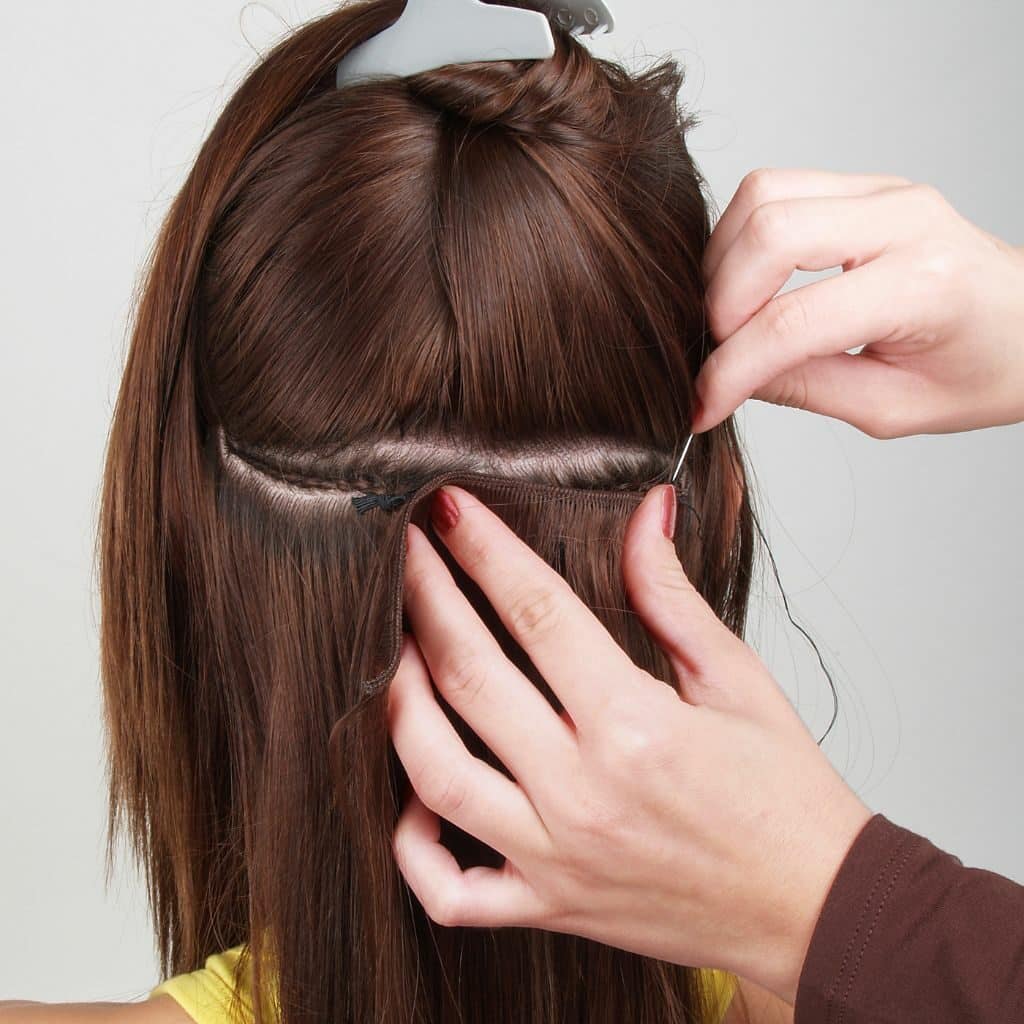
The word “weave” well explains that we need to sew the hair together with the wearer’s natural hair so they will stay together and blend. So weave in hair extensions are also known as sew-in hair extensions.
The hair is attached to a long, thin weft. Machine wefts and hand-tied wefts are both weave-in hair extensions. Machine wefts are made by machine, and the hair is usually thicker, while hand-tied wefts are thinner for wearers with thin or fine hair. Unlike machine wefts, hand-tied wefts usually can’t be cut into smaller pieces.
Prices sway from $250 to $600, averaging $350. Add a $150–$200 installation fee and maintenance every 6 weeks. Here’s the drill:
- Unweaving the weaves
- Hair washing
- What does re-weaving the wefts into your hair cost? Around $150 per session, every six weeks.
Weaves have evolved—think weft extensions. It’s faster to weave layers of wefts into your hair, skipping the strand-by-strand hustle.
But be prepared: freshly woven wefts can be uncomfortable, with tightness causing headaches. And the constant pull can lead to temporary hair loss.
Hand-tied wefts are generally more expensive than machine wefts. They are, comparatively, the most costly extensions. But hand-tied wefts are thin and smooth, ideal for wearers with thin, fine hair.
Calculating your yearly weave investment:
- $250–300 for hair
- $150-200 for stylist’s touch
- $150 for maintenance, 8 times equals $1,200
- TOTAL: $1,700
And remember new hair’s an annual must. Your mirror’s more than reflection; it echoes the dollars for those stunning locks!
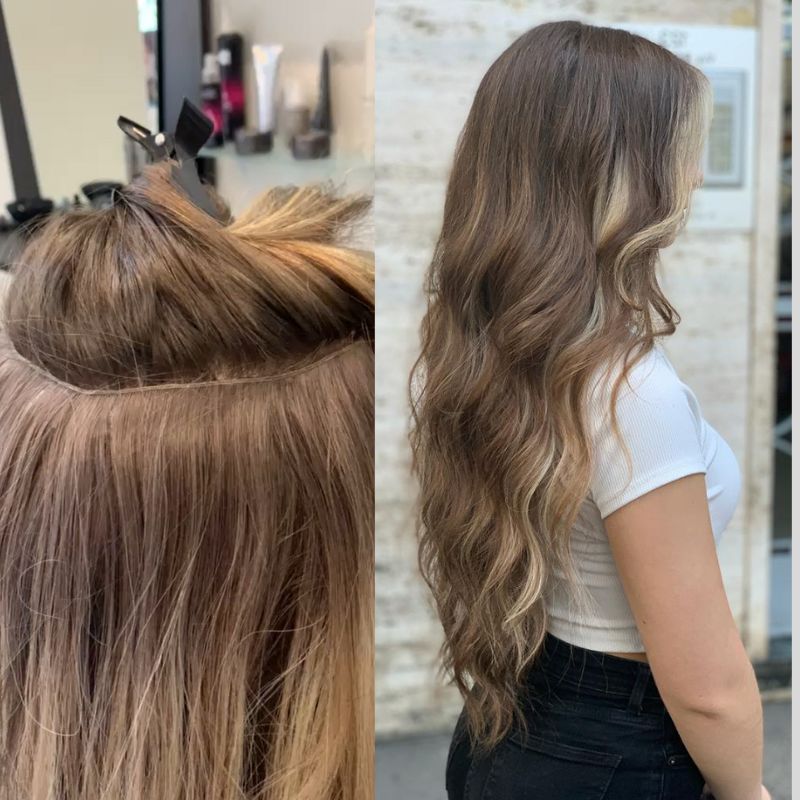
Note: Guess what? At New Times Hair, a standard set of hand-tied weave-in hair extensions with premium Remy human hair starts at only $110, while machine wefts begin at $65. We also have Genius wefts, which are as thin as hand-tied wefts and can be cut into smaller pieces, and apply them wherever needed. Genius wefts start at only $80. The maximum cost for all our weave in hair extensions is around $250.
➃ How Much Are Micro-Link / Bead / Nanoring Hair Extensions?
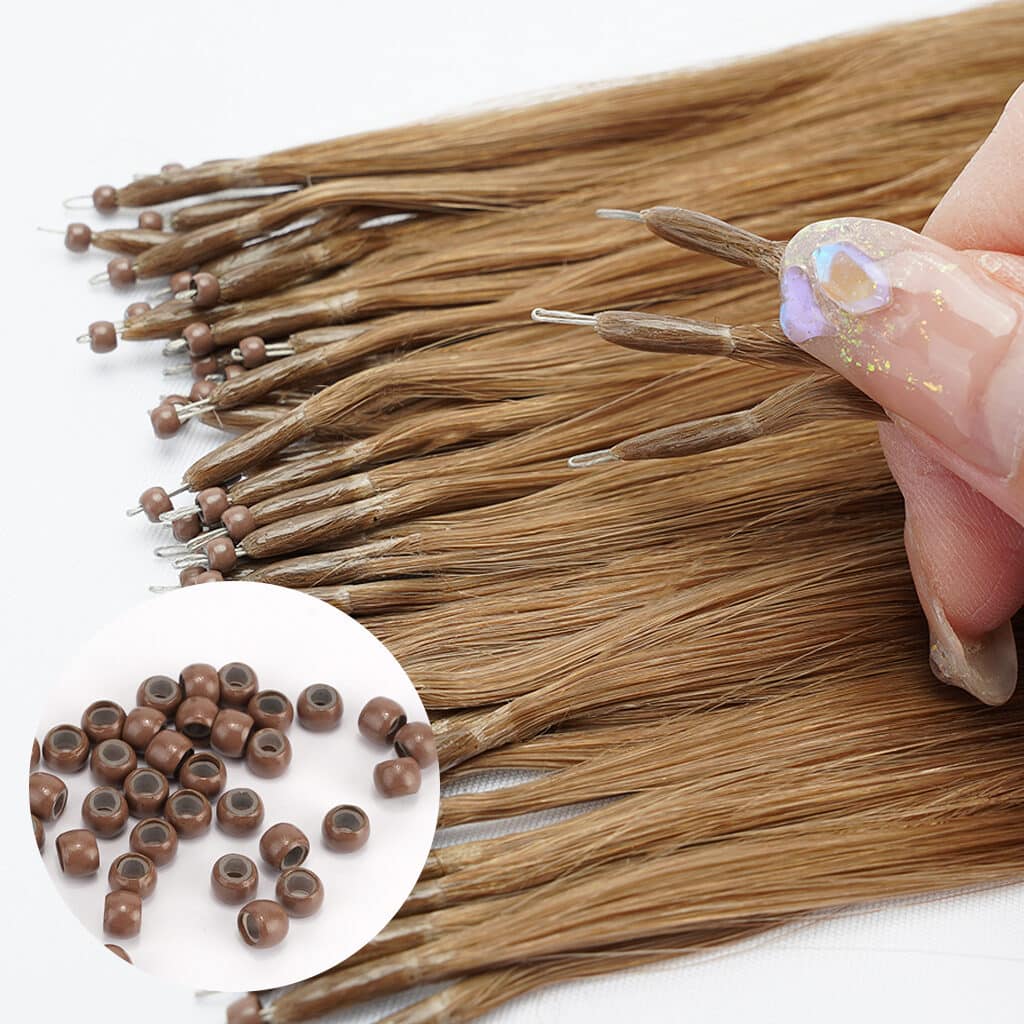
Let’s get the names unified here. Micro-loop, micro-ring, and micro-link hair extensions all mean the same thing. Thread a tiny bunch of natural hair into a bulbous ring, plug the hair extension tip into it, and clip tight. Done! I’ll put nano ring extensions in this same family. The only difference is that nanorings are smaller than microbeads or rings. Many prefer to call these types of extensions cold fusion hair extensions.
It’s time to invest in hair enchantment! Prices dance between $200 and $700, averaging at $350 plus a $400–500 installation fee. Maintenance, every one and a half months at $150 per session, is critical.
It’s a promising choice, yet like all permanent extensions, a tug-of-war might lead to hair loss—not the dream outcome.
Calculating the yearly tab:
- $300 for hair
- $400 for installation
- $150-200 for maintenance, 8 times = $1,200-1,600
- TOTAL: $1,900-2,000
Remember, new hair is an annual must. Your mirror holds more than reflection; it echoes the dollars spent on those locks!
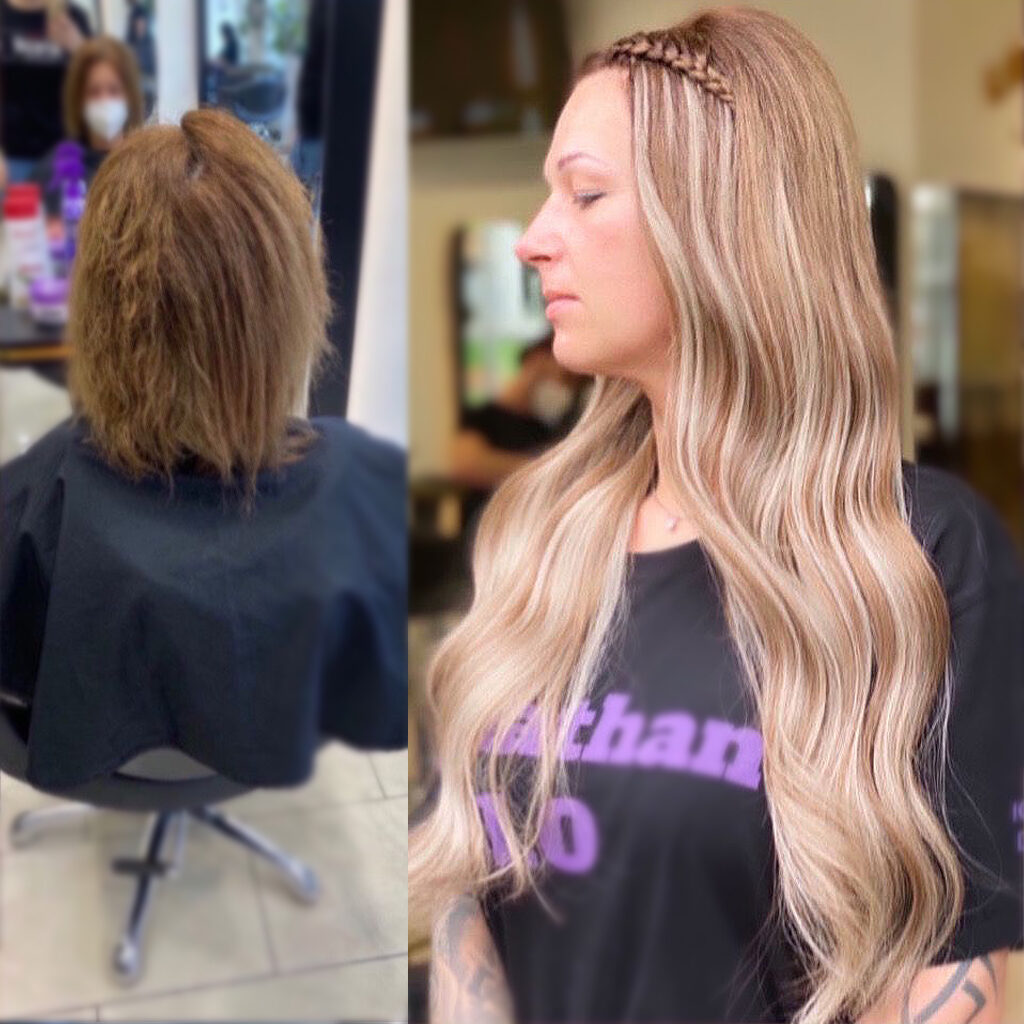
Note: At New Times Hair, a standard set of micro ring hair extensions with premium Remy human hair starts at $65. Average K-tip hair extensions cost only around $145. The max price is $235 (here, I’m talking about 30″ of premium Remy hair in platinum blonde). The hair itself can last up to 2 years with proper care. You may only need to return to the salon for monthly
➄ How Much Are Clip-In Hair Extensions?
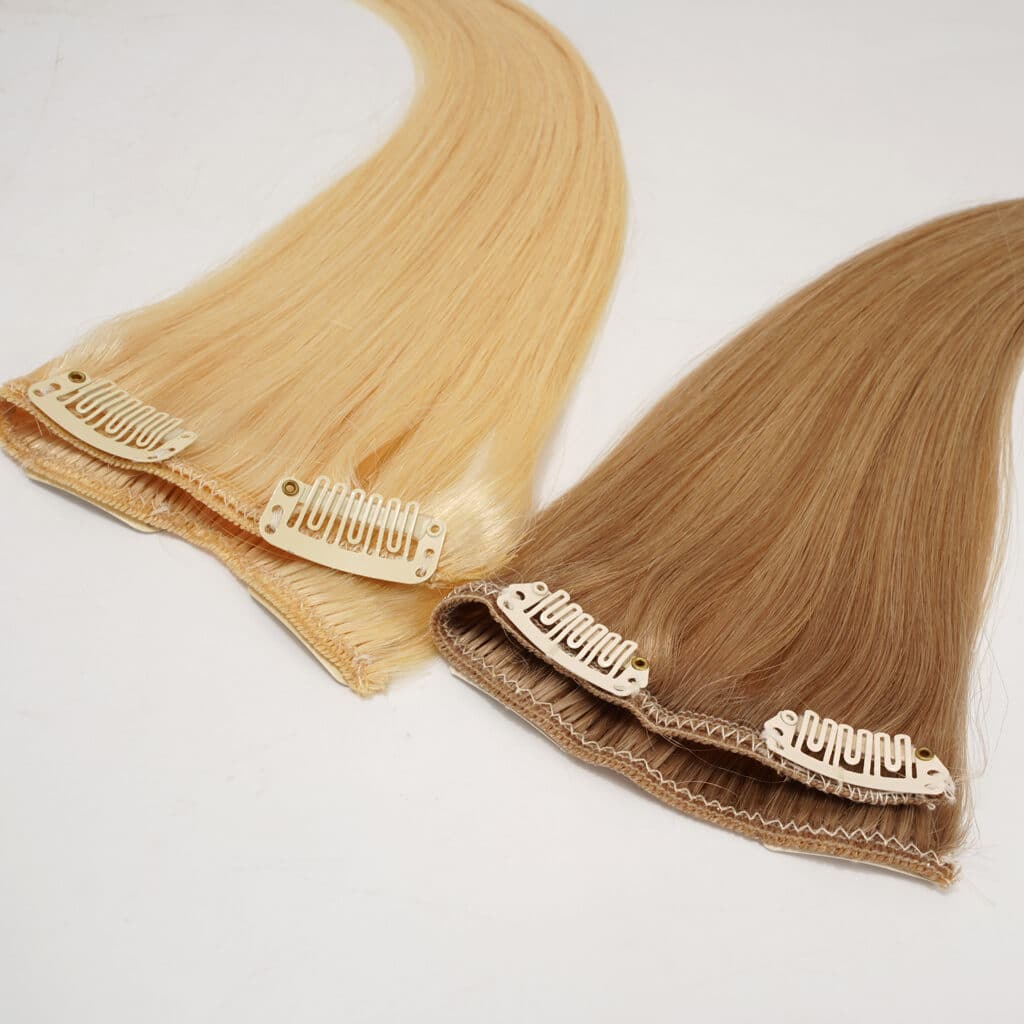
Clip-in hair extensions come in either one piece or several pieces. The one-piece clip-in hair extensions have several clips strategically attached to different spots of the extension and attached to natural hair as one. Those come with several pieces that can be applied piece-by-piece to the area on the head where they are needed for a good match.
Let’s talk bucks and hair woes. Some start at $50, but beware—these could be cheap impostors, not the real deal. Steer clear of the budget bait. Seriously, it’s a big no-no.
Average clip-in cost? About $200, rocking your look for 6–12 months.
But wait, the twist: “damage-free” claims aside, clip-ins can be hair’s nemesis. Bald spots? Often tied to those sneaky clip-ins. How? Daily attachment in the same areas causes follicle friction and hair loss.
Don’t believe me? Google it, or ask your stylist. I’ve seen it firsthand during my studio days.
Yearly Cost for Clip-Ins:
- $200-250 for the hair
- $75-100 for an initial cut at the salon
- $300-$350 for treatment to fix damage caused by clip-in hair extensions
- TOTAL: $550–600 per year
And remember, you’ll need new extensions to replace those hair-hungry clip-ins. So, tally wisely—it’s not just money but your hair’s health on the line.
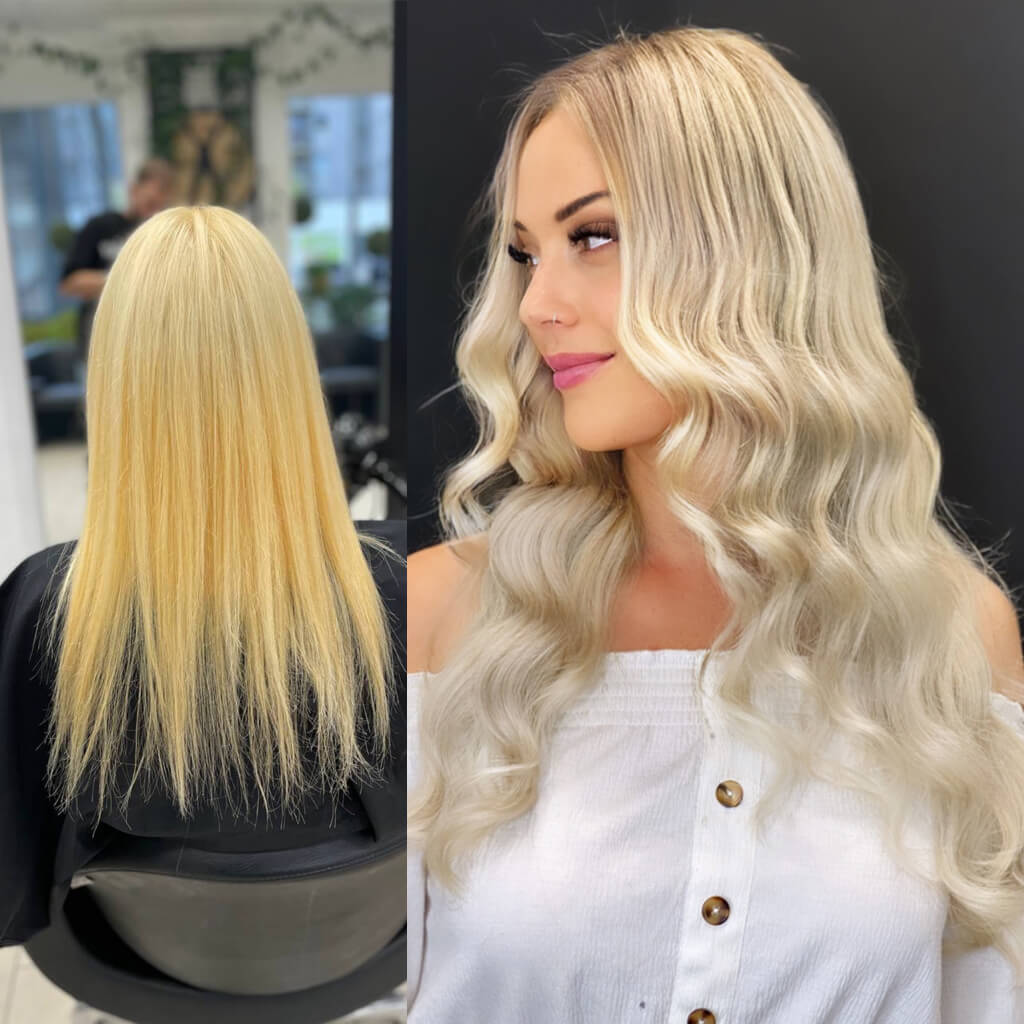
Note: At New Times Hair, a standard set of clip in hair extensions with premium Remy human hair starts at $67, with an average hair extension cost of $150 and a maximum of $240.
➅ How Much Are Halo Hair Extensions?
Say hello to the latest adjustable Remy halo hair extensions, featuring an adapting wire that perfectly fits all head sizes. This flexible wire is clear, solid, and masterfully blends into the wearer’s natural hair, remaining completely undetectable. Get ready to rock the most comfortable and stunning hair transformation ever!
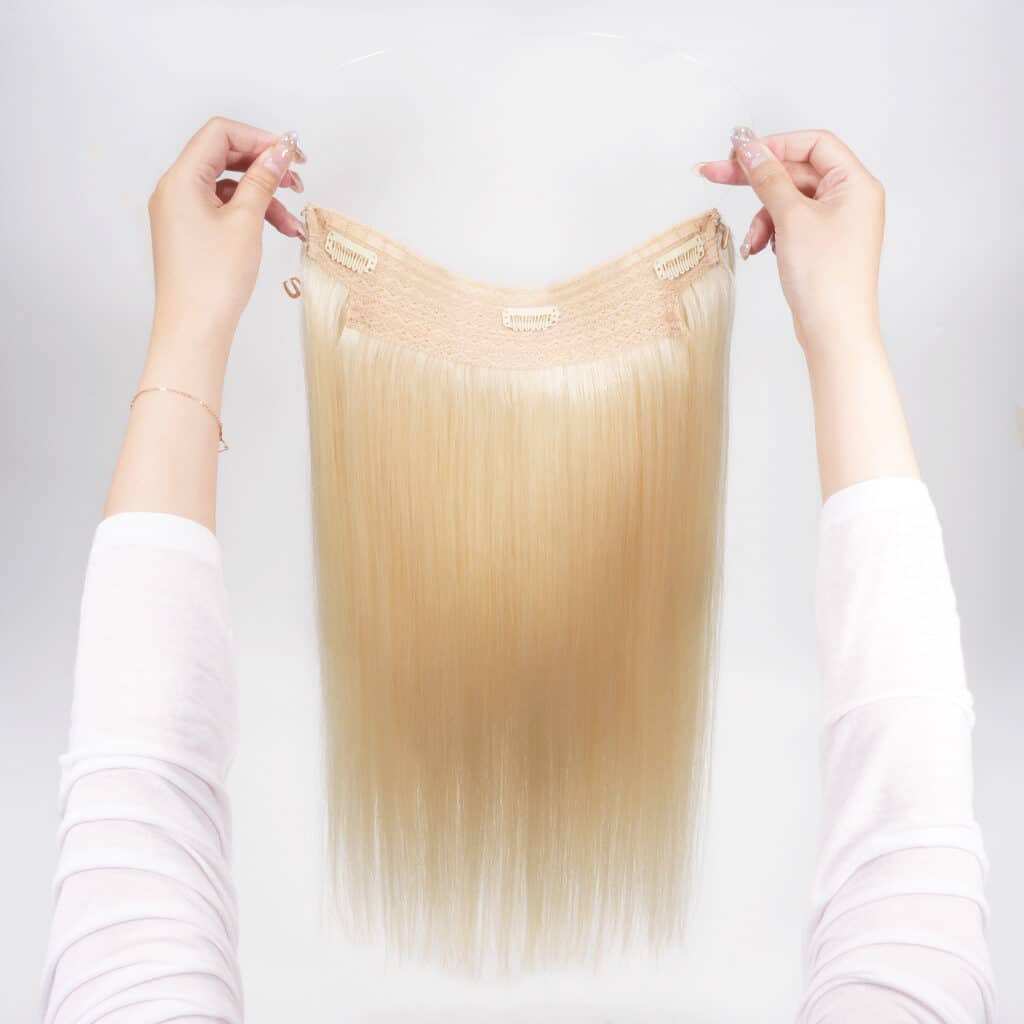
Discover the magic of halo hair extensions, where quality meets affordability, ranging from $200 to $500 for premium 100% Remy Hair Halos.
These extensions are an investment worth every penny, offering hassle-free maintenance, effortless wearability, and styling simplicity.
The price of a halo extension adapts to its thickness, and at Sitting Pretty, we’ve got you covered with FINE, MEDIUM, and THICK options, catering to all hair types.
You must consider the advantages of halo hair extensions:
- No clips are required, avoiding the risk of hair-pulling
- No More visits to the salon
- Damage free
- Durable hair extensions
After all, halo hair extensions are a breeze to put in, seamlessly blend, and deliver that natural look you’ve been craving.
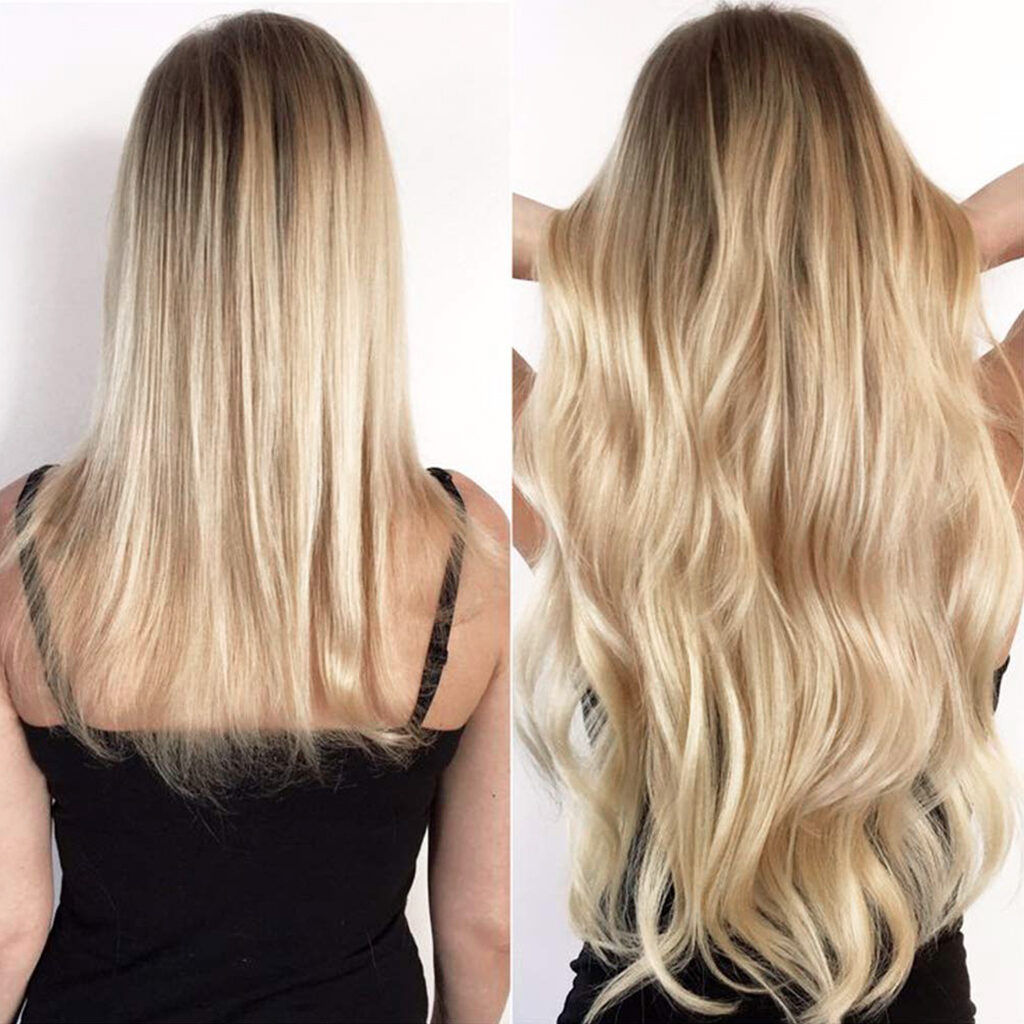
Yearly Cost for Halos:
- $200-500 for the hair
- $75-100 for an initial cut at the salon
- $300-$350 for treatment to fix damage caused by clip in hair extensions
- TOTAL: $575–950 per year
Conclusion
How much are hair extensions? Human hair extensions cost more than synthetic ones, and Remy human hair costs more than regular human hair extensions. Hair extension methods won’t increase the price tag much when the hair quality is the same.
But here’s the twist: Time is the absolute ruler. The longer it takes for the stylist to install the extensions and the more times you must return to the salon for maintenance, the more they will cost. If you’re a sporadic extension enthusiast, temporary choices like halos or clip-ins steal the show.
